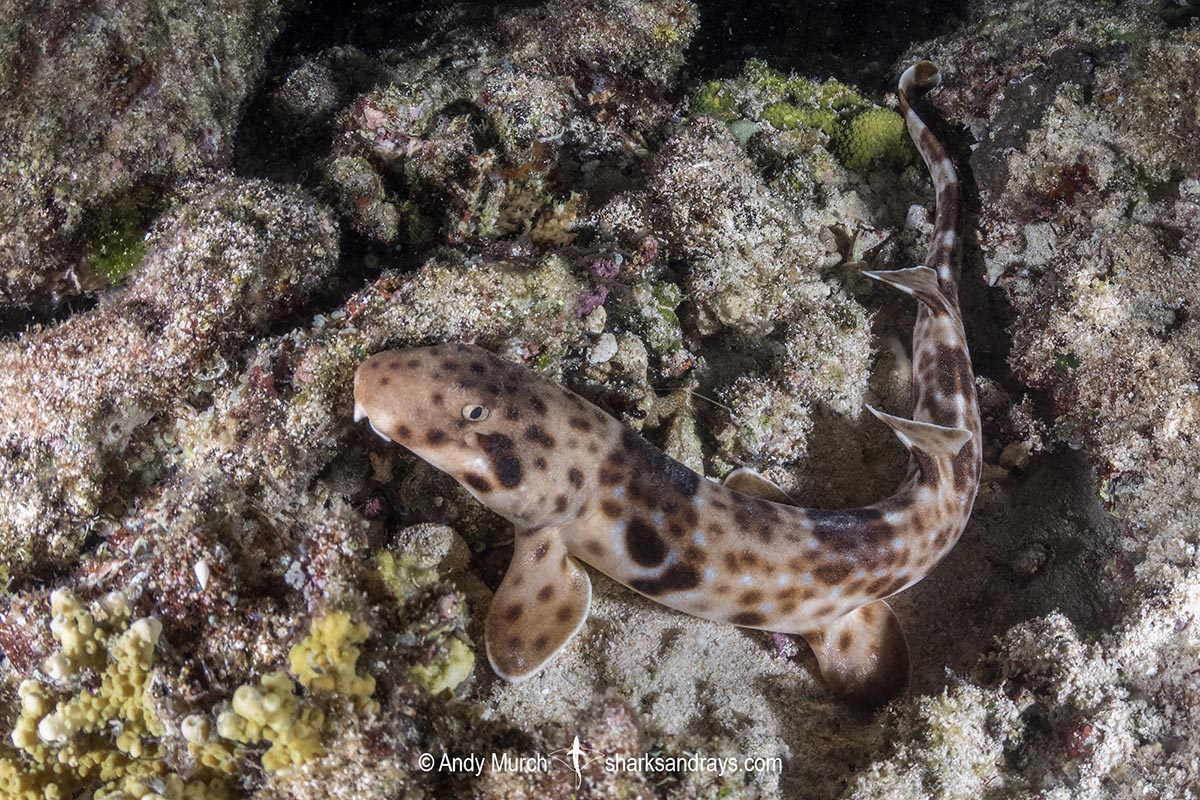Common name(s)
Raja Ampat Epaulette Shark, Indonesian Speckled Carpetshark.
Binomial
Hemiscyllium freycineti
Synonyms
Chiloscyllium malaianum, Scyllium freycineti, Scyllium malaisianum, Scyllium malaisianus.
Identification
Elongated, slender body. Well developed pectoral and pelvic fins on fore-body (used partially for walking). Two equally sized dorsal fins on rear-body. Tail long and straight with upper and lower caudal lobes on underside. Sub-terminal notch present.
Dorsal coloration light reddish-tan speckled with small, mostly oval, dark spots. In mature adults, groupings of spots form leopard-like markings. Darker patches along upper back with concentrations of dark spots form 8 or 9 irregular saddles along body and tail. Two larger dark spots are present on the lower cheek just behind the eye; these often form an elongated diagonal dark blotch.
The ocelli (eyespot behind gill) is large, oval and ringed in white on its underside. Two smaller, joined, dark blotches form a figure 8 shape just behind and below the ocelli. Ventrum pale.
Size
Maximum size 68cm. Size at birth unknown.

Conservation Status
NEAR THREATENED
The Raja Ampat Epaulette Shark (Hemiscyllium freycineti) is directly targeted for consumption by artisanal fishermen across it’s entire range. It is collected by hand, using hand spear on intertidal reef flats, and hand-line fishing. It is also collected for the aquarium trade.
Reef degradation from climate change (warm-water coral reefs are projected to suffer significant losses of area and local extinctions, even if global warming is limited to 1.5ºC) and the negative effects of tourism (harvesting corals for building materials, speed boat passage, and direct reef damage by divers) has also been a significant factor in declining epaulette shark numbers.

Habitat
Shallow tropical coral reefs, reef rubble patches, and seagrass beds. From intertidal zone to 12m, on or near the bottom.
Distribution
Previously thought to be wide ranging throughout New Guinea until the species was divided. Now considered endemic to the Raja Ampat region of West Papua in Indonesia.
Reproduction
Oviparous. Reproductive cycle poorly known.
Diet
Unknown.
Behavior
Nocturnal. Rests by day in crevices on the reef or under corals.
Reaction to divers
If not approached too closely, it is possible to watch this species hunting on the reef during night dives. Usually moves away if disturbed.
Diving logistics
As its common name suggests, the Raja Ampat epaulette shark is endemic to the Raja Ampat Islands in West Papua, Indonesia. However, in that area it is quite easy to find during shallow night dives. Mark Erdmann (who described this species) estimates an average of 200 individuals are present per square kilometre. So there could be as many as 660,000 individuals present throughout its known range.
I found this species in front of the village dock on Gam Island, but any shallow spot with good coral coverage should be just as productive.



